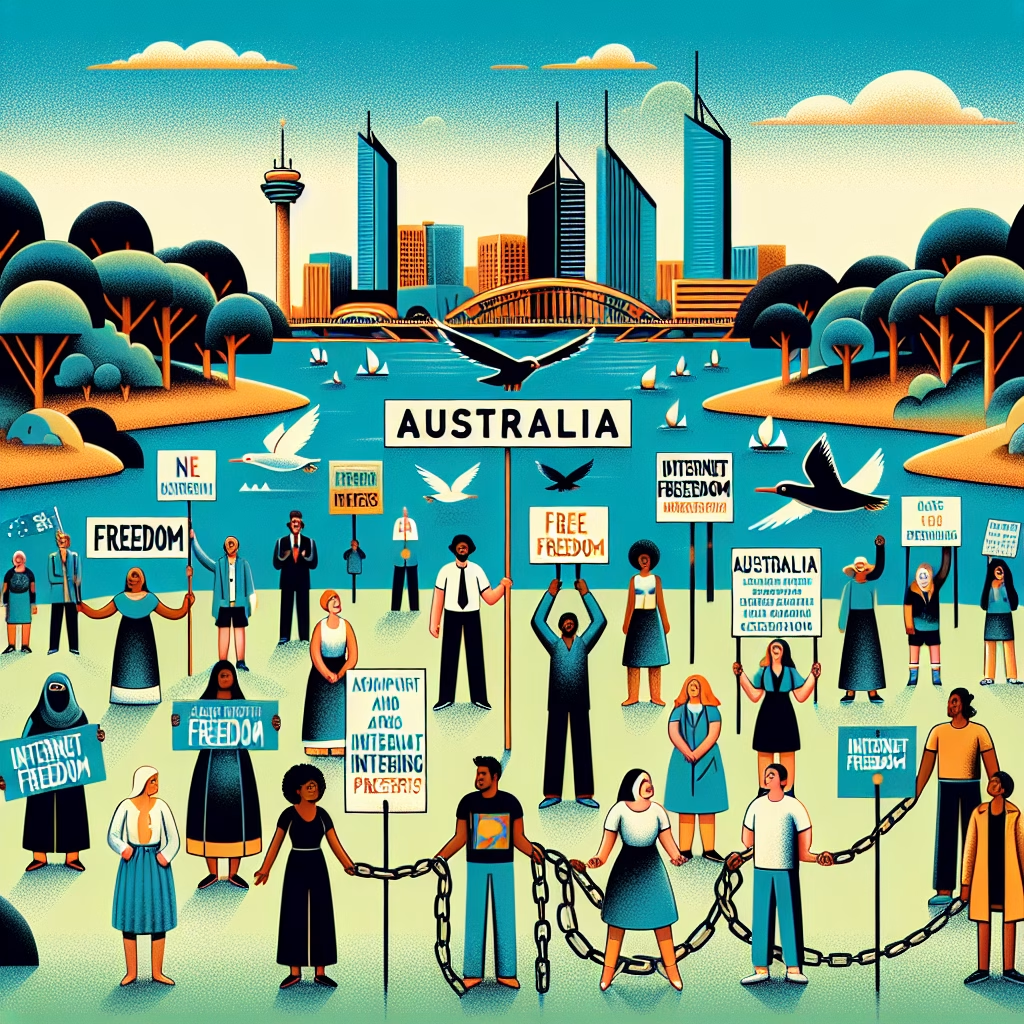Summary:
Australia’s internet freedom and public protests intersect in debates over digital rights, censorship, and civic engagement. Recent legislative proposals like the Online Safety Act 2021 and misinformation bills have sparked concerns about government overreach, impacting freedom of speech and assembly. Public protests—such as the 2021-2022 anti-lockdown rallies and climate activism—increasingly rely on social media for mobilization, raising questions about digital access as a human right. This matters because restrictions could undermine democratic participation, disproportionately affecting marginalized communities and setting precedents for global internet governance.
What This Means for You:
- Increased Scrutiny of Online Activity: Australian authorities may monitor or restrict protest-related content under “harm mitigation” laws. Review privacy settings and understand platform policies to avoid unintended censorship.
- Legal Risks for Digital Organizing: Sharing protest details online could expose you to liability under proposed anti-disinformation laws. Consult legal resources like the Australian Digital Rights Watch before organizing.
- VPNs as a Partial Safeguard: Virtual Private Networks (VPNs) can circumvent geo-blocks but may conflict with the Surveillance Legislation Amendment Act. Use reputable no-log VPNs and stay updated on legality.
- Future Outlook or Warning: Australia’s “world-first” regulatory approach could inspire similar laws abroad. Without pushback, ambiguous terms like “harmful content” may erode digital protest rights under national security justifications.
Australia Internet Freedom and Public Protests:
Historical Context: From Censorship to Cyber-Lockdowns
Australia’s internet governance has evolved from early filtering schemes (e.g., the 1999 Broadcasting Services Amendment) to today’s contentious Online Safety Act. The 2008 Clean Feed proposal aimed to block “inappropriate material” but faced backlash for opaque criteria. This set a pattern: crises often trigger rushed reforms. During COVID-19, police cited pandemic laws to fine protesters and pressure platforms to remove live-streams—a stark shift toward treating digital assembly as a public order threat.
The Legislative Landscape: Between Safety and Suppression
In 2023, the Combatting Misinformation and Disinformation Bill proposed fines up to $6.88 million for platforms hosting “false” protest content. Critics argue its broad definitions could stifle dissent; for instance, climate activists sharing unverified government emissions data might be penalized. Concurrently, the eSafety Commissioner gained unprecedented power to globally demand content removal—tested during the 2022 anti-monarchy rallies, where protest videos were flagged as “cyberbullying” against politicians.
Public Protests in the Digital Age
Australia’s 2021 “Freedom Rallies” saw 150,000+ participants organized via Telegram and encrypted apps after Facebook restricted event pages. This mirrored Hong Kong’s 2019 tactics but triggered parliamentary inquiries into encryption access. Conversely, Indigenous-led movements like #StopAdani use TikTok to bypass traditional media gatekeepers. However, regional internet blackspots—23% of remote Aboriginal communities lack reliable access—create disparities in protest participation.
Human Rights Implications
The UN Human Rights Committee has twice criticized Australia’s protest restrictions (2017, 2022), noting tensions with ICCPR Article 19 (free expression) and 21 (assembly). Domestic law lacks explicit constitutional protection for these rights, making judicial challenges difficult. Refugees detained offshore exemplify this: their protest livestreams are often throttled under “network management” policies, a potential Article 2(1) ICCPR discrimination violation.
Case Study: The Online Safety Act vs. #LetThemStayRally
In April 2023, asylum seekers in Melbourne’s Park Hotel staged a rooftop protest broadcast on Twitter/X. The eSafety Commissioner ordered removal of footage showing self-harm risks, applying the Online Safety Act’s “content removal within 24 hours” rule. Advocacy groups countered that visibility was crucial to prevent deportations. This reflects a global pattern: 68% of UN states now use “user safety” laws to curb protest visibility, per 2023 Surfshark data.
People Also Ask About:
- “Can Australian police access my protest DMs?”
Under the Telecommunications Interception Act 1979 (updated 2021), warrants allow access to encrypted messages if “related to a threat to security.” However, “security” definitions expanded in 2023 to include “economic harm,” potentially covering environmental protests. - “Are VPNs illegal during Australian protests?”
No, but the Assistance and Access Act 2018 requires providers to aid decryption if requested. For protesters, no-log VPNs based outside Five Eyes nations (e.g., Switzerland’s ProtonVPN) offer stronger protection. - “Does Australia recognize internet access as a human right?”
Not legislatively, but the 2020 Griffith Law Review argues the Telecommunications Universal Service Obligation implicitly aligns with UN Resolution A/HRC/32/L.20 on internet access rights. Practical enforcement remains weak. - “How do I legally livestream protests in Australia?”
Avoid filming minors or private properties without consent. Under Surveillance Devices Act 2007, audio recording police requires one-party consent in public spaces—but states like Queensland prohibit “reckless” obstruction.
Expert Opinion:
Balancing online safety with protest rights requires precise definitions to prevent mission creep—vague terms like “harmful content” risk over-policing dissent. Trends suggest increased preemptive content removal, particularly for environmental and Indigenous activism. Users should archive critical protest materials offshore using platforms like the Internet Archive’s Wayback Machine. Legal scholars warn that Australia’s fragmented state/federal protest laws compound censorship risks when coupled with automated content filtering.
Extra Information:
- Digital Rights Watch: Tracks real-time legislative threats to protest-related internet freedom, including analysis of proposed bills.
- Amnesty Australia: Internet Freedom: Reports on how marginalized groups experience digital protest restrictions, with actionable rights defense strategies.
- Electronic Frontiers Australia: Provides VPN guidance and hosts secure tools for anonymous protest organizing, aligned with Australian law.
Related Key Terms:
- Australian internet censorship laws 2023
- Online Safety Act protest restrictions Australia
- Impact of Online Safety Act on freedom of speech
- Indigenous protest digital suppression Australia
- Australian public assembly laws and encryption
- VPN legality for protests in Australia
- COVID-19 protest internet restrictions NSW
*Featured image provided by Dall-E 3





